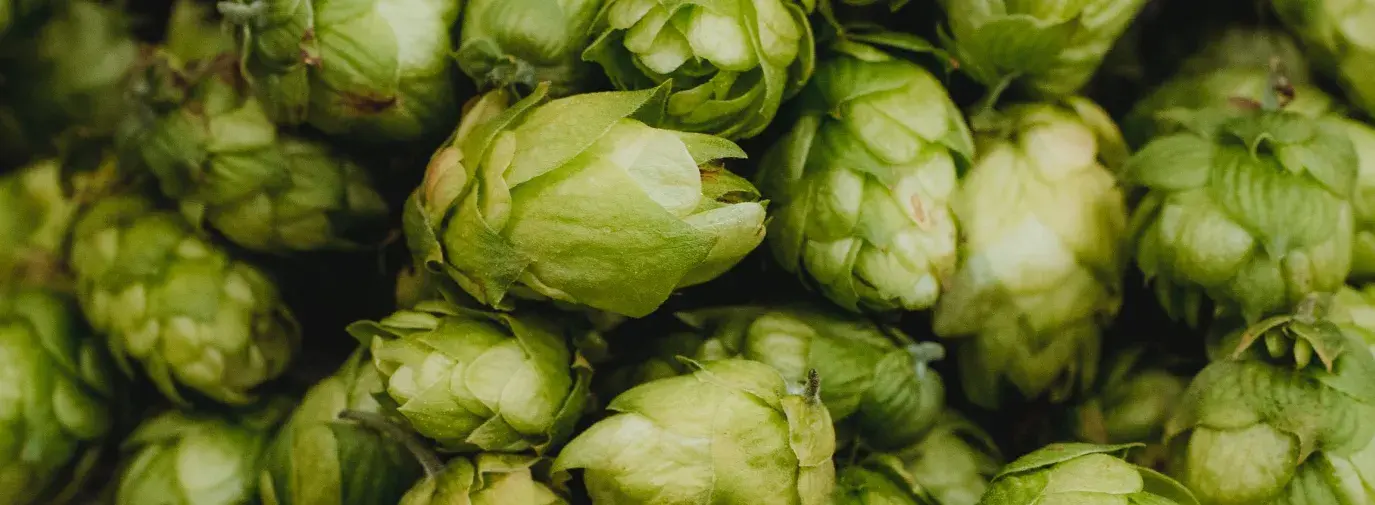
Cousins and neighbors, Tim (who has always had a green thumb, growing loofahs on his back fence as a kid) and Kory Byrne, started growing hops out of curiosity in 2017. Their neighbor was a homebrewer, so they thought, “Why not try growing a few hops?” The Byrne cousins and I sat down in early December at Our Lady of Perpetual Hops brewery in New Albany, Indiana to enjoy the hops of their labor. Our conversation covered a plethora of topics, from to Knob View Hops to beekeeping to school curriculum.
A Dream and a Couple of Beers
Tim and Kory shared that they started farming hops “on a dream and a couple of beers”, reading everything they could about growing hops (“One book. There is one book on growing hops.”). They started with just three hop plants. The hops started growing so quickly (6-8 in/day!) that they added three more plants that first season. From the start, the Byrnes were concerned about soil health and began taking soil samples. They began fine-tuning the soil to ensure the PH was right for growing hops (5.5-8).
Finding a brewery to take a chance on them proved to be quite the challenge. They tried to connect with several local breweries, but none were willing to speak to them before their first harvest. Fortunately, the folks at Our Lady of Perpetual Hops (OLPH) were in the beginning stages of opening a new brewery and were willing to speak with them. A few years later, the Byrnes’ hops--Knob View Hops--are used for OLPH’s flagship beer, and their kids are growing up together.

Mother Nature is a Cruel Teacher
Kory and Tim are quick to admit that they have learned many lessons along the way, sharing that it often felt like they did everything four times before doing it right the fifth. It seemed that every step of the way to becoming hops farmers was riddled with obstacles, including a wobbly trailer hauling their new-to-them hops harvester that turned a 10-hour trip from east-central New York into a 19-hour trip to southern Indiana. No teacher, however, was as cruel as Mother Nature. The more erratic the weather becomes, the harder it is to plan and prepare for the season. In 2020, there was hardly enough water. In 2021, there was far too much water, and the over-saturated field threatened the harvest. The Byrnes collect data each season in hopes of using it to prepare for whatever weather comes their way.
Farming Practices
In addition to tracking their soil health from the start, the cousins explained that they wanted to both care for the soil and make sure they were producing the safest possible product for consumers. Tim and Kory follow regenerative agriculture as close as they can, using minimal tillage, rotating inputs, and planting cover crops—including turnips, winter wheat, rye, and white and crimson clover—which all help to put nitrogen back into the ground. And hops themselves are perennials! They are continuously learning how to work with nature to produce the best possible crop. Since Tim started caring for bees, they have also been conscientious about including plants to feed their pollinators.
Finding a Community through Bees
In early 2020, Tim signed up to take a bee-keeping course in Louisville. Unfortunately, the class was cancelled due to COVID-19. Since he had already paid for the materials and bees, Tim finished the course via books and YouTube. By caring for and protecting the bees, Tim and Kory realized they have an entire ecosystem to protect. They kept adding more bee boxes and are now up to 10. The Byrnes heard from their neighbors that their blueberry and pumpkin crops have improved greatly since the bees have joined their ecosystem. While their neighbors still use chemical inputs, they have either started using less-toxic chemicals or spray at night when the bees are sleeping.

Fitting in with Industry
Industrial agriculture—particularly growing hops at scale—poses several obstacles to starting out as a hop farmer in the US. For example, the most popular hop in the US is the citra; but to grow citra hops, a farmer must live in Iowa or Washington state and have $1 million cash on-hand. The Byrne cousins shared that everyone warned them against getting into the hop growing business, telling them that it is difficult to get a foot-in-the-door. They both admit that they would not have done so had they known then what they know now.
Farming, however, has become a family affair. They shared that the lessons they learned in farming and small business—lessons they are passing down to their children—are the real payoff from growing hops.
One of the biggest lessons they’ve learned is how fragile our food supply chain is, explaining you don’t realize its fragility until there is a problem in one part of it. The COVID-19 pandemic has revealed that fragility even further. The Byrnes are here to do their part, growing a crop they love, protecting their soil, and making sure their colony of bees thrive.
Saving our soil is key to reversing climate change and Green America's Soil Superheroes, Knob View Hops included, are doing the real work.



